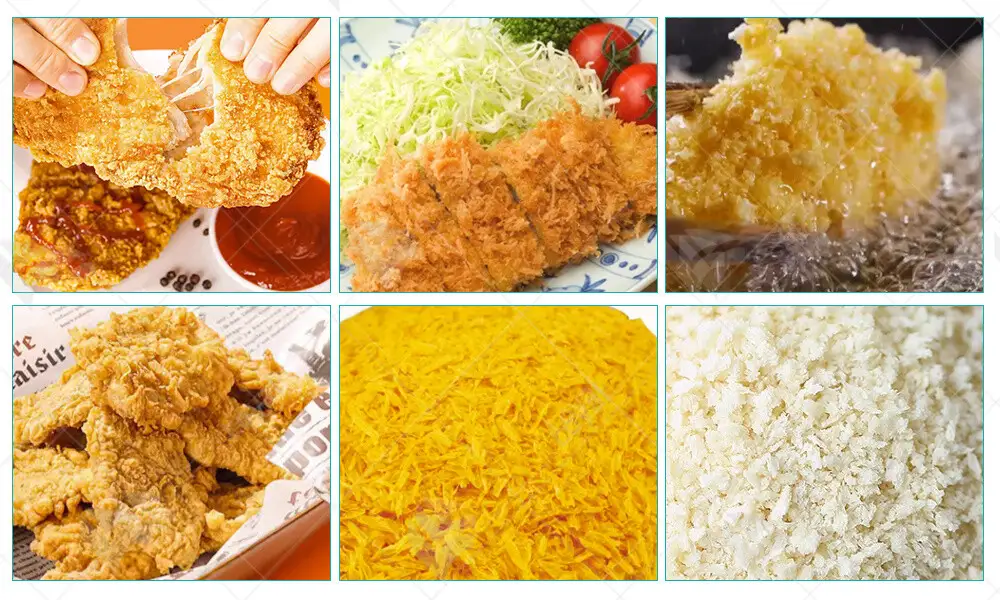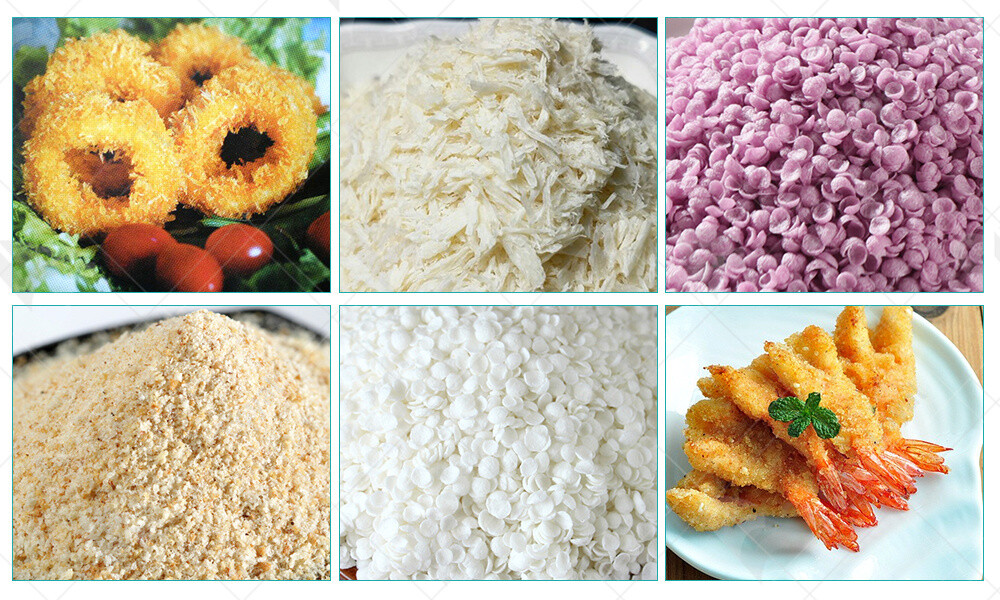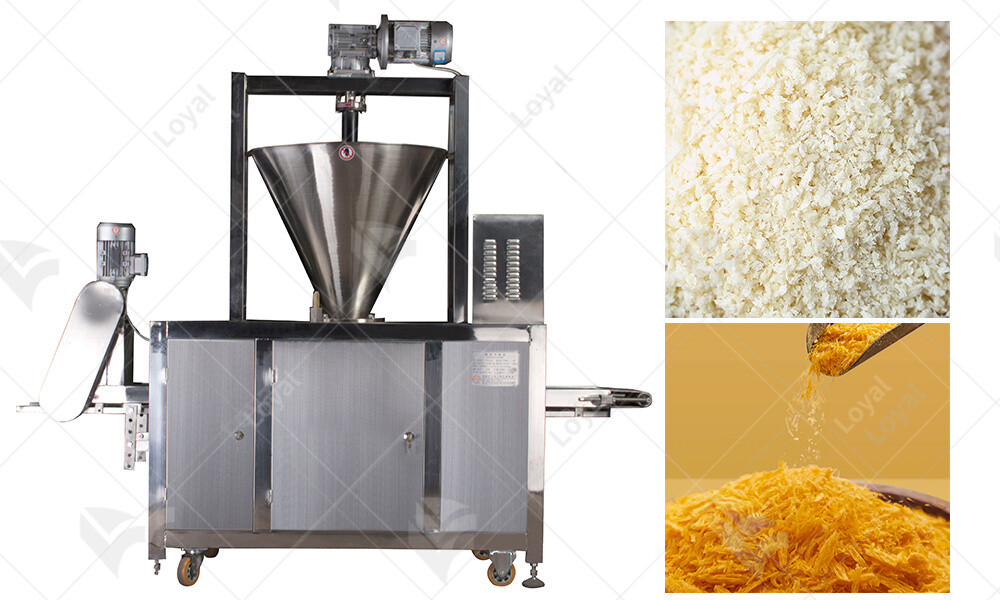Everything you need to know about bread crumb maker machines in 2024
Introduction
In 2024, the food processing industry continues to evolve rapidly, with bread crumb maker machines at the forefront of innovation. These machines play a crucial role in transforming stale or fresh bread into fine, uniform crumbs that are essential in a variety of culinary applications, from breading and coatings to fillers and toppings. As an industrial food machinery expert, understanding the latest advancements and trends in bread crumb maker machines is vital for maintaining competitive edge and operational efficiency.
Bread crumb maker machines have become indispensable in both large-scale food production facilities and smaller artisanal bakeries. Their ability to produce consistent, high-quality bread crumbs ensures that food products meet the exacting standards of texture, taste, and appearance required by today's consumers. This introduction delves into the significance of bread crumb maker machines, setting the stage for a comprehensive exploration of their features, benefits, and future trends.

What is a bread crumb maker machines?
Bread crumb maker machines are specialized industrial equipment designed to convert bread into bread crumbs. These machines play a crucial role in the food processing industry by providing a consistent and efficient method for producing high-quality bread crumbs, which are widely used in a variety of culinary applications.
In essence, a bread crumb maker machine operates by shredding, grinding, and processing bread to achieve the desired crumb texture and size. The process involves several stages, including bread slicing, drying, and grinding, all of which are meticulously controlled to ensure the final product meets specific standards.
The primary components of a bread crumb maker machine include:
1. Feeding Mechanism: This component ensures the steady and consistent supply of bread into the machine.
2. Drying System: Bread is often dried to a specific moisture level to achieve the ideal texture and prevent spoilage.
3. Grinding Mechanism: The core component, which determines the final crumb size and texture, can be adjusted to produce fine, medium, or coarse crumbs.
4. Sieving System: Ensures uniformity by separating crumbs based on size and reprocessing larger particles if necessary.
These machines are designed with precision and efficiency in mind, ensuring that the bread crumbs produced are of consistent quality, crucial for maintaining the standards required in commercial food production. As the demand for bread crumbs continues to rise, especially in the fast food and ready-to-eat meal sectors, the role of bread crumb maker machines becomes increasingly vital.

Types of bread crumb maker machines available in 2024
In 2024, the market for bread crumb maker machines has expanded significantly, offering a variety of options to meet diverse production needs. Here, we outline the primary types of bread crumb maker machines available:
1. Roller Mills
Roller mills are among the most common types of bread crumb maker machines. These machines utilize cylindrical rollers to crush bread into fine crumbs. The adjustable settings allow for precise control over crumb size, making roller mills ideal for producing consistent, high-quality crumbs used in a wide range of culinary applications.
2. Hammer Mills
Hammer mills employ rapidly rotating hammers to pulverize bread into crumbs. Known for their robust performance and versatility, hammer mills can handle various bread types, including stale and hard bread, ensuring efficient crumb production. This type is particularly favored in large-scale operations where high throughput and durability are essential.
3. Pin Mills
Pin mills use closely spaced pins to grind bread into crumbs. The high-speed impact between the pins produces uniformly sized crumbs with minimal heat generation, preserving the quality of the bread. Pin mills are well-suited for applications requiring fine, delicate crumbs, such as coatings for fried foods.
4. Disc Mills
Disc mills feature two counter-rotating discs with adjustable gap settings. The bread is fed through the discs, which shear it into crumbs. This type of bread crumb maker machine is valued for its ability to produce a wide range of crumb sizes and textures, offering flexibility for different food processing requirements.
5. Cross-Beater Mills
Cross-beater mills use a combination of beaters and sieves to grind bread into crumbs. The rotating beaters provide a vigorous impact, breaking the bread into uniform crumbs. This machine is suitable for producing both coarse and fine crumbs, making it a versatile option for various industrial applications.
6. Air Classifier Mills
Air classifier mills integrate grinding and classifying functions in a single unit. The bread is ground by high-speed rotors and then classified by airflow, separating fine crumbs from coarser particles. This type of machine is ideal for achieving precise crumb sizes and is often used in high-end food processing facilities.

Benefits of Using a bread crumb maker machines
Benefit | Description |
| Increased Efficiency | Bread crumb maker machines significantly speed up the production process, reducing manual labor and time. |
| Consistent Quality | These machines ensure uniform size and texture of bread crumbs, meeting industry standards consistently. |
| Cost-Effective Production | Automated operations reduce overall production costs by minimizing waste and optimizing ingredient usage. |
| Versatility | Capable of producing various crumb sizes and types, these machines cater to diverse culinary needs. |
| Enhanced Hygiene | Modern machines are designed with easy-to-clean components, ensuring compliance with food safety regulations. |
| Scalability | Suitable for both small-scale and large-scale operations, allowing businesses to scale production efficiently. |
| Energy Efficiency | Advanced models incorporate energy-saving technologies, reducing the environmental impact and operational costs. |
| User-Friendly Operation | Intuitive interfaces and automated controls make these machines easy to operate, even for non-expert users. |
| Durability | Built with high-quality materials, bread crumb maker machines are durable and require minimal maintenance. |
| Innovation Integration | Equipped with the latest technological advancements, ensuring the production process stays ahead of trends. |

Installation Requirements and Setup Process
When it comes to bread crumb maker machines, understanding the installation requirements and setup process is crucial for seamless operation. In 2024, advancements in technology have simplified these procedures, ensuring efficiency and reliability in food production facilities.
1. Location and Space Considerations
Before installing a bread crumb maker machine, it's essential to assess the available space and layout of the production area. These machines vary in size and configuration, so selecting an appropriate location is paramount. Adequate space should be allocated for both the machine itself and the necessary clearance for maintenance and operation.
2. Power Supply and Electrical Compatibility
Bread crumb maker machines typically require a stable power supply to function optimally. Prior to installation, ensure that the electrical specifications of the machine align with the available power source in your facility. It's advisable to consult with a qualified electrician to confirm compatibility and address any wiring or voltage requirements.
3. Assembly and Setup Procedure
Once the location and power supply are sorted, the assembly and setup process can commence. Follow the manufacturer's instructions carefully, as each machine may have specific requirements. Begin by unpacking the components and organizing them according to the provided instructions. Assemble the machine systematically, ensuring that all parts are securely fastened and aligned.
4. Calibration and Testing
After assembly, calibration is essential to ensure the accuracy and efficiency of the bread crumb maker machine. This involves adjusting various settings and parameters according to the desired output specifications. Refer to the user manual for guidance on calibration procedures, and conduct thorough testing to verify the machine's functionality.
5. Safety Precautions and Training
Before operating the bread crumb maker machine, it's imperative to prioritize safety precautions and provide adequate training to personnel. Familiarize yourself with the machine's safety features and emergency shut-off procedures. Additionally, train operators on proper usage, maintenance protocols, and troubleshooting techniques to mitigate risks and maximize productivity.

Troubleshooting Common Issues
As industrial food machinery experts, addressing common issues with bread crumb maker machines is paramount in ensuring seamless operations within the food processing industry.
1. Uneven Crumb Texture
One common issue encountered with bread crumb maker machines is the production of uneven crumb texture. This inconsistency can result from various factors, including improper adjustment of grinding settings, irregular feeding of bread slices, or worn-out grinding components. To troubleshoot this issue, operators should meticulously calibrate the machine settings, ensure uniform feeding of bread slices, and regularly inspect and replace worn-out parts to maintain optimal performance.
2. Excessive Noise During Operation
Excessive noise during machine operation can be disruptive and indicative of underlying mechanical issues. This may stem from misaligned components, loose fasteners, or insufficient lubrication of moving parts. To mitigate noise-related issues, operators should conduct routine maintenance checks, including alignment adjustments, tightening of fasteners, and proper lubrication of bearings and gears. Additionally, investing in noise-dampening solutions or soundproofing enclosures can further minimize operational noise levels.
3. Jamming and Clogging
Jamming and clogging are common operational challenges faced by bread crumb maker machines, often resulting from inadequate bread preparation or foreign object contamination. To troubleshoot these issues, operators should ensure proper bread slicing techniques and inspect raw materials for any foreign debris or contaminants. Implementing preventive measures, such as installing safety guards and using high-quality bread ingredients, can also minimize the risk of jamming and clogging, thereby optimizing machine efficiency and productivity.
4. Inconsistent Production Output
Inconsistent production output, characterized by fluctuations in crumb volume or quality, can hinder manufacturing efficiency and product consistency. This issue may arise from irregular feeding of bread slices, suboptimal grinding settings, or insufficient machine calibration. To address this challenge, operators should standardize bread slice dimensions, fine-tune grinding parameters, and regularly monitor machine performance to identify and rectify any deviations from optimal operating conditions.

Future Trends and Innovations
As we delve into the landscape of bread crumb maker machines in 2024, it's evident that the industry is witnessing remarkable advancements and innovative trends. Let's explore the future trends and innovations shaping this domain.
1. Automated Production Processes
In 2024, automation continues to revolutionize the bread crumb production process. Bread crumb maker machines are now equipped with advanced robotics and AI algorithms, enabling seamless automation of various production stages. From ingredient mixing to shaping and drying, these automated systems enhance efficiency, minimize labor costs, and ensure consistent product quality.
2. Integration of IoT and Smart Technologies
The integration of Internet of Things (IoT) and smart technologies is redefining the capabilities of bread crumb maker machines. These interconnected systems enable real-time monitoring of production parameters, predictive maintenance, and remote troubleshooting. By leveraging data analytics, manufacturers can optimize machine performance, minimize downtime, and enhance overall operational efficiency.
3. Customization and Versatility
Consumer preferences are becoming increasingly diverse, driving the demand for customizable bread crumb solutions. In response, manufacturers are developing versatile maker machines capable of producing a wide range of bread crumb varieties. Whether it's fine or coarse crumbs, gluten-free options, or flavored variants, these machines offer unparalleled versatility to meet evolving market demands.
4. Sustainability and Eco-Friendly Solutions
Sustainability is a key focus area in the food processing industry, and bread crumb maker machines are embracing eco-friendly solutions. Manufacturers are incorporating renewable energy sources, such as solar and wind power, to reduce carbon footprints. Additionally, innovative designs are optimizing resource utilization and minimizing waste generation, aligning with global sustainability goals.
5. Enhanced Food Safety Measures
Maintaining food safety standards is paramount in the bread crumb production process. In 2024, manufacturers are implementing advanced sanitation protocols and hygienic design principles in maker machines. From stainless steel construction to automated cleaning systems, every aspect is meticulously engineered to ensure product integrity and compliance with regulatory standards.

Conclusion
In conclusion, the landscape of bread crumb maker machines in 2024 reflects a convergence of technological innovation, sustainability initiatives, and customer-centric approaches. These machines have undergone significant advancements, driven by the industry's commitment to efficiency, quality, and food safety.
Manufacturers have embraced automation and precision grinding technology to enhance productivity and ensure consistent product quality. Additionally, the integration of IoT technology has ushered in a new era of smart manufacturing, enabling real-time monitoring and predictive maintenance.
Sustainability is a key focus area, with manufacturers increasingly adopting eco-friendly solutions and implementing stringent food safety measures. From renewable energy sources to hygienic design principles, every aspect of machine development prioritizes environmental responsibility and consumer protection.
Customization and flexibility are also paramount, catering to diverse consumer preferences and market demands. Whether it's producing gluten-free crumbs or specialty textures, these machines offer versatility and adaptability to meet evolving needs.
Looking ahead, the future of bread crumb maker machines is bright, with continued advancements poised to drive efficiency, sustainability, and customer satisfaction. By staying abreast of these trends and innovations, stakeholders can position themselves for success in the dynamic landscape of food processing machinery.

Reference
The following are five authoritative foreign literature websites in the field of Industrial food machinery:
1. Food Engineering Magazine
Website: https://www.foodengineeringmag.com/
2.Food Processing Magazine
Website: https://www.foodprocessing.com/
3.Journal of Food Engineering
Website:https://www.journals.elsevier.com/journal-of-food-engineering
4. Food Manufacturing Magazine
Website:https://www.foodmanufacturing.com/
5. International Journal of Food Science & Technology
Website:https://onlinelibrary.wiley.com/












